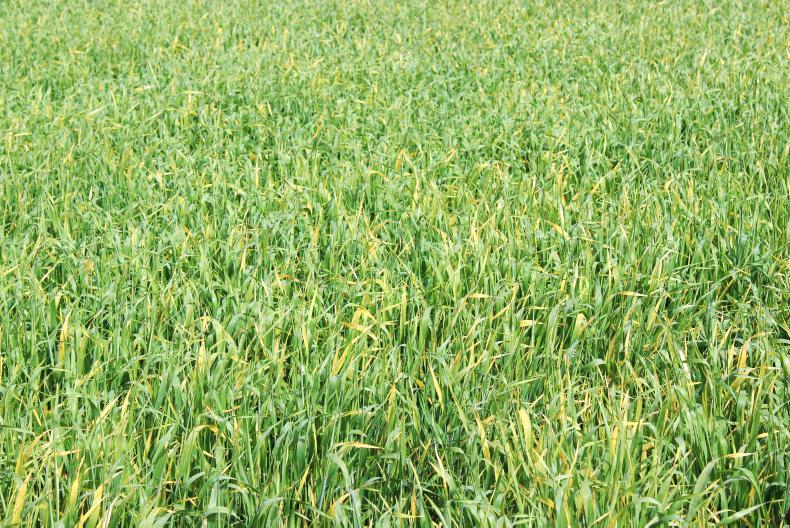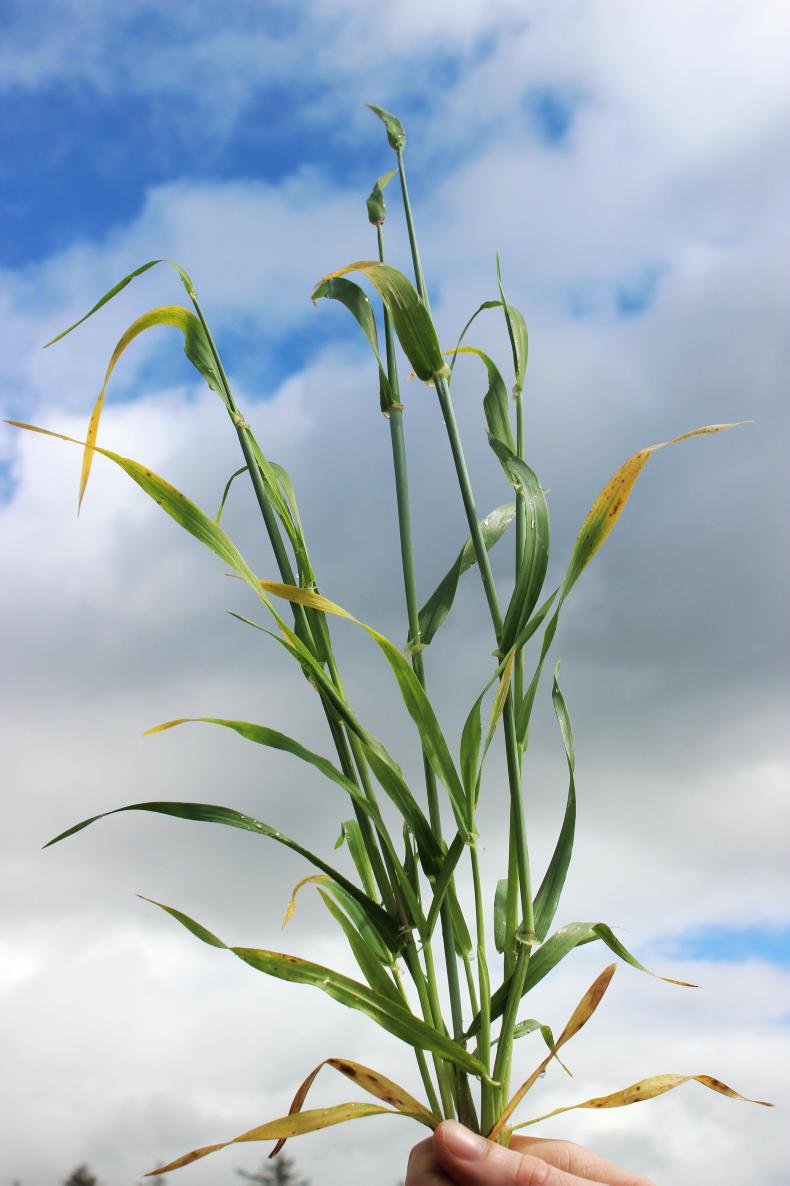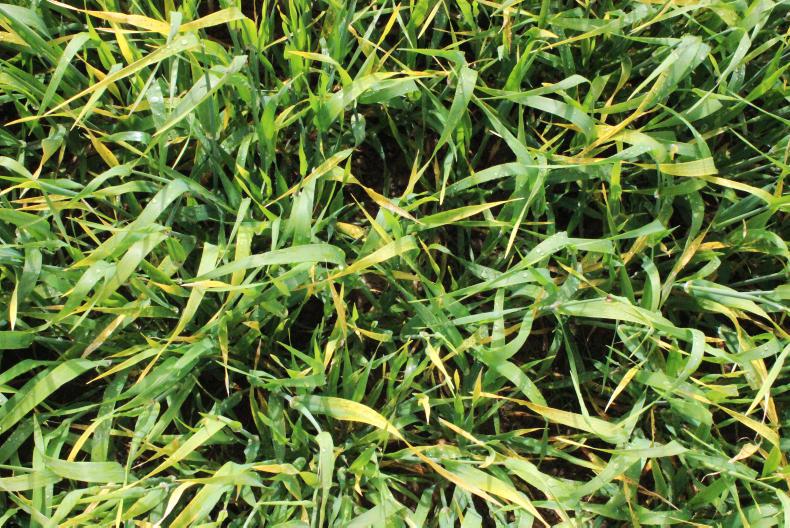Yellow leaves are a common sight in spring barley crops around the country this year. The automatic assumption is BYDV infection, but every leaf symptom may not be caused by virus and it can be quite difficult to be certain.
I was in a crop of very good spring barley a week ago, which looked to have a fair amount of BYDV present. However, closer inspection revealed that this was not as bad as it looked from a distance. I was in another crop of spring barley last week, which made the previous one look almost perfectly green.
The crop in Pictures 1 and 2 is showing more yellow than any of us would like. This crop had a distinctly yellow appearance when one looked across the field. At a guess, more than 20% of the crop leaves were yellow and most individual infected leaves were about 75% yellow. This was worst in a thin area of the crop, which had not tillered massively and the natural tendency was to diagnose BYDV.
There are a relatively small number of yellow leaves in most crops, but generally not bad and certainly not a worrying amount. This field had been sprayed with a pyrerthroid insecticide a few days after the fourth leaf had emerged. I could not see any aphids in the crop when I visited, so this would not seem like an insecticide failure.
In the past, it has never been possible to prevent all infection or symptoms, as an aphid will have to land on the crop (and possibly infect it) before the insecticide can kill that aphid.
So a low level of infection is always inevitable under modest infection pressure from aphids on the wing. And if infection pressure is very high, then one will generally get more infection and more yellow leaves before the population is reduced.
Early and late infection pressure
My first contact was with Teagasc’s new entomologist Louise McNamara. I asked Louise about the predominance of the symptom in crops around Oak Park and elsewhere in the country, which she was aware of.
Louise said that many of the spring barley fields in Oak Park have some yellowing of leaves or BYDV symptoms. And this seems to be the case across a range of planting dates, indicating that infection pressure was present even in the earlier part of the season.
But are yellow leaves a definite symptom of BYDV infection or could they be a partial indicator of stress? Diagnosos is essential. Louise said that Teagasc has an ongoing spring barley trial, which is looking at the effect of planting date on the incidence of BYDV.
She said that all planting dates have some leaf yellowing or BYDV symptoms present. The planting dates span from 10 March to 21 April and previous research would indicate that the earliest of these dates might not show a benefit from aphid control.
Louise would be rightly cautious about calling all yellow leaves BYDV symptoms and I share that concern. I associate virus infection as something that runs through the whole plant rather than just being a symptom on a single leaf. But many or most of the yellow leaves in the bad crop I visited appeared be have only one leaf showing yellow symptoms.
It is common that when a leaf gets infected with BYDV all the newer leaves on that stem will also show the classical yellow-leaf symptom and it is common that the older leaves will subsequently develop the symptoms also.
Think of the flu. You may only appear to have a runny nose and a cough, but you will also have no energy, aches and pains, etc, which are much less obvious. Viruses tend to affect most or all of an infected organism. But in this crop it seems to be just one leaf layer that is showing the symptoms (Picture 2).
This is important because the majority of the plants with the yellow leaves in that crop had only one yellow leaf per stem – nothing older or nothing newer was showing symptoms at that time (see Picture 3). This could change, but it was not the only thing about the symptoms that make me suspicious. Generally, virus infection will trigger the top one-third to half the leaf to turn yellow. In this case, the yellowing extended to two-thirds to three-quarters of the leaf length.
Occurred early
One other thing that was odd was that these yellow-leaf symptoms were actually visible in the crop prior to when the aphicide was applied. And the only areas that showed less symptom were the turning headlands, which always receive more cultivation and firming. Fertiliser was incorporated pre-sowing and firmer headlands may have lessened weather stresses at that time.
All in all, this crop will generally be described as having bad BYDV, with possible suggestions of aphicide resistance. But aphids do not appear to have survived the treatment. We must await the very valuable work being done now by Teagasc, as yellow leaves may not be BYDV infection, but we need to be sure whether our aphicides are working or not.
The fact that very early-sown plots show yellow leaf symptoms and that plots sprayed a number of times still had yellow leaves would be common to the findings of the early 1990s when resistance was not even spoken about.







SHARING OPTIONS